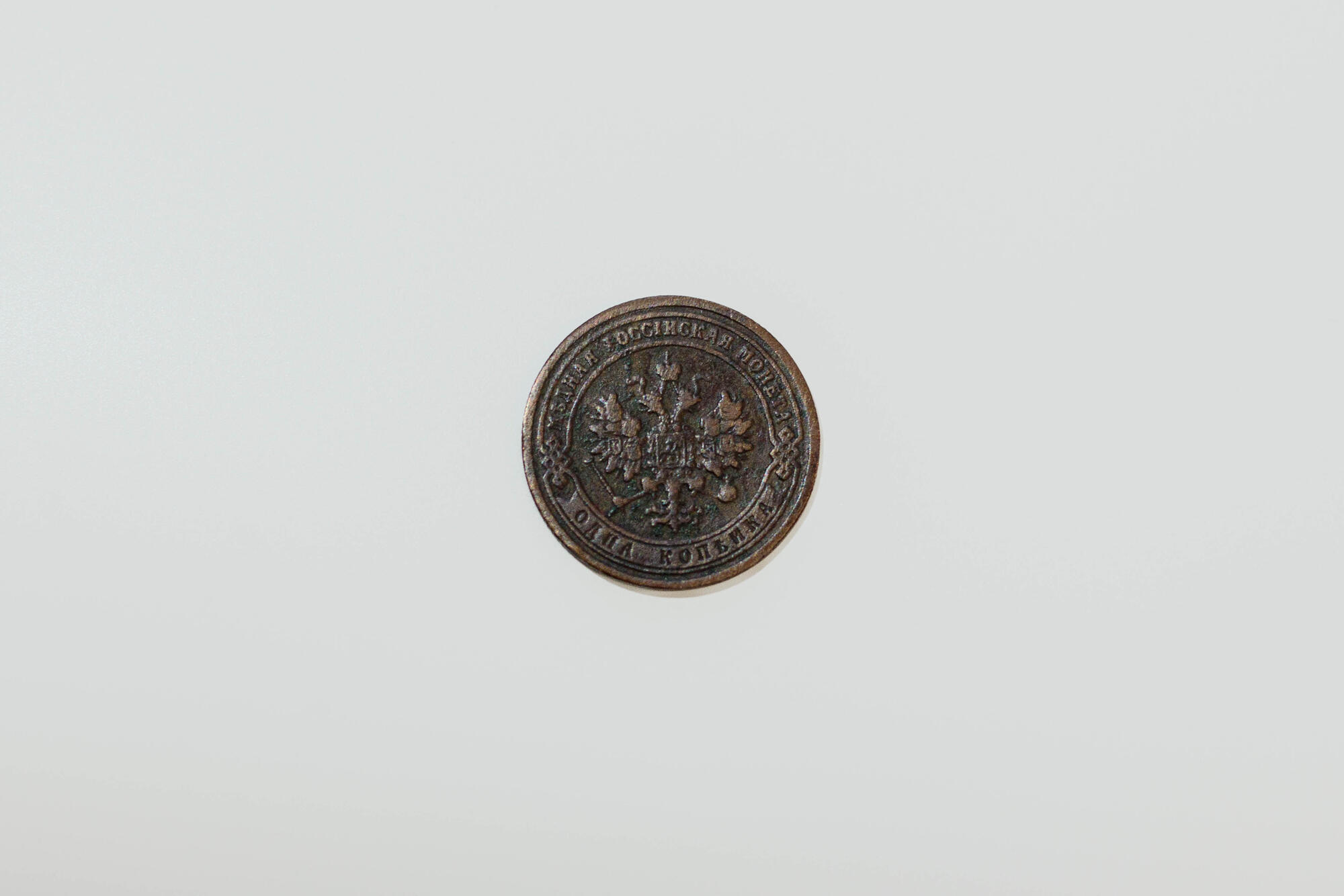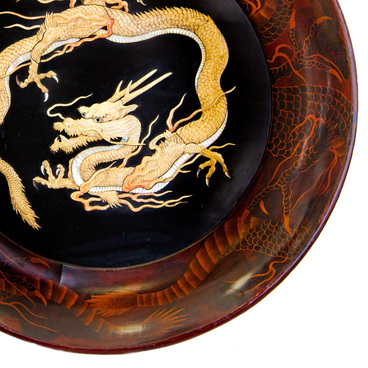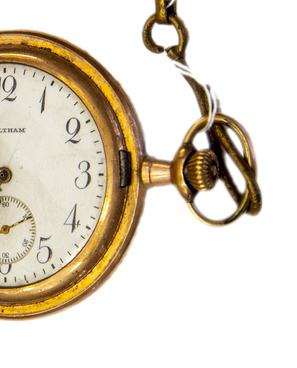Kopeck coins issued under Emperor Nicholas II were divided into three categories: silver, billon and copper. The 25- and 50-kopeck coins were made of 90% silver. The images on the coins were identical to the ones on the ruble banknote, repeating the portrait of the emperor on the reverse and the coat of arms on the obverse. Billon coins are special: their purchasing power exceeds the value of the metal contained in them. 50% silver was used for coins in denominations of 5, 10, 15 and 20 kopecks. 1-, 2-, and 3-kopeck coins were made of copper alloy.
This 1-kopeck copper coin with the image of Emperor Nicholas II was issued in 1903 at the St. Petersburg Mint. The obverse bears the image of the state emblem of the Russian Empire — a double-headed eagle with an imperial crown. Around the circumference is an inscription divided by a cartouche — a decorative element in the form of a geometric intertwined ornament. The words “Russian copper coin” are engraved in the upper part of the obverse; the lower part features the inscription “One kopeck”. On the reverse, in the center there is an engraving in two lines “1 kopeck”, below there is a curly cut-off line, and under it is the monogram of the St. Petersburg Mint.
A monogram as a symbol made up of side-by-side or intertwined initials was often a characteristic feature of paintings. In addition, it was used in royal seals and stamps. Later, this element began to be featured on coins. A wreath of laurel and oak branches runs along the circumference along the edge in the lower part. The date of minting is indicated in the upper part: 1903. At the time when this coin was issued, only the aforementioned St. Petersburg Mint operated in the Russian Empire. It was founded in 1724, by decree of Peter I, on the territory of the Peter and Paul Fortress. It continues its work to this day and is located in the same place. Coins of a larger denomination were made of silver and gold, as well as alloys. Kopecks were made of copper, as the use of precious metals for low-denomination coins was simply not worth it.



